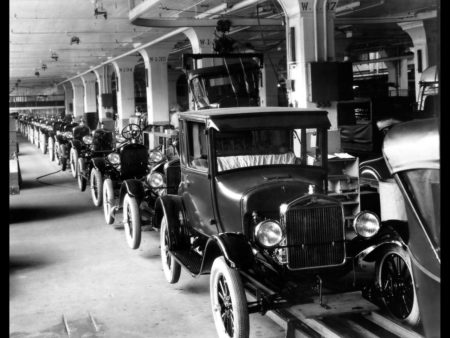Are you interested in a source of new ideas that are proven to work and that don’t cost you anything? They’re available through a process I call Borrow & Bend.
One of the best ways to make breakthrough improvements at your own organization is to borrow ideas from other industries and disciplines then bend those ideas to fit your needs. You look brilliant when you take a ready-made, successful solution out of one context and put it into another context where it is unknown and it takes on new meanings, new applications, new usefulness.
Here are a few examples:
The Wright Brothers borrowed ideas by researching kites and hang gliders, observing birds, and studying boat propellers. They borrowed what they needed and bent it to fit their needs.
In 1908 Melitta Bentz used blotting paper, designed for mopping up excess ink, as the world’s first coffee filter.
Henry Ford is hailed as an American hero for figuring out that dividing labor into small specialized tasks maximizes output and drives down production cost. This makes a good story, but it’s just not true.
Ford visited leading companies in non-competing industries looking for new ideas, new methods. He was searching for process innovations he could borrow to help him produce a high volume of cars at a rapid pace, with high quality, at a lower cost than his competition.
During one trip to Chicago in 1912, Ford tours the Swift-Armour meat packing plant. What Ford discovers is the process every meat packer uses to get different cuts of meat off the bone: A moving disassembly line. Where you don’t move the workers to the workstation, you move the workstation to the workers.
While this method is commonplace in the meat packing industry, it is unheard of in automobile manufacturing.
So Ford borrows the idea of a moving assembly line and combines it with several other ideas also unheard of in automobile manufacturing: Ford borrows the idea of mass produced interchangeable parts from the Singer Sewing Machine Co. That idea was commonplace in China about 1,000 years ago, but not yet common in U.S. manufacturing. Ford also applies the concept of a motorized conveyor belt, which canneries had been using since the late 1800s, to keep his assembly line moving.

The Highland Park Plant, where these 1926 Model Ts are rolling off the line, was built to support the increased volume in Model T production. It served as the Model T’s factory for 18 of its 20 production years. From the collections of The Henry Ford and Ford Motor Company. (04/21/08)
Ford didn’t invent the automobile or any of these methodologies. His genius lay in borrowing, combining and bending each of these elements to fit his situation. It is Ford’s excursions—his being open to ideas from non-obvious sources—that led to a revolutionary process innovation—that enabled him to revolutionize the automobile industry.
All of these people took ideas from one environment and transported it to another. Were these strokes of creative genius; acts of stunning originality? Or are these simply cases of borrowing a good idea to solve a challenge?
Running an organization effectively requires the ability to look outside for solutions – ways to achieve maximum performance in any given area.
To make it easier to discover creative solutions, follow these steps:
- Broadly define your challenge.
- Search out the various ways others have solved that broad challenge.
- One of those solutions may directly solve your specific challenge. Or you may have to use parts of several disparate ideas as building blocks for constructing a new solution to your unique situation.
Look at what your competitors are doing. Seek inspiration from other industries. Look for ideas that have proved successful in a hobby, the entertainment world, the scientific community or in nature.
Many strokes of genius are nothing more than recycled versions of commonplace ideas from outside your normal circle. Russian inventor Genrikh Altshuller suggests that 95% of ‘new problems’ have already been solved, probably many times over. And he comments further that you most likely will find the solution in industries and technologies which you do not have knowledge about.
The more varied your experience and exposure, the more sources from which you can draw, and the more connections you can make to solve problems and generate new ideas. Read about industries other than your own. Ask customers and suppliers for ideas. Look outside to innovate within.
Is adopting someone else’s solution stealing? The answer depends upon who you borrow from. Borrow a solution from within your industry and you may be accused of industrial espionage. Borrow from another industry and you are considered a creative genius.
You can Borrow & Bend internally, too, by creating standard product or software platforms and adding custom modules. Some platform examples include a common user interface for software applications and Chrysler’s K Car chassis.
Genius lies in borrowing ideas and repurposing them. There’s no need to reinvent the wheel, just repurpose it. If someone else has a good solution, borrow it and make it your own.
In the words of French filmmaker Jean-Luc Godard: “It’s not where you take things from; it’s where you take them to.”
- Problem-solving produces an emotional benefit, not a financial one - March 18, 2022
- Innovation is about Solving Mysteries, not Puzzles - September 7, 2021
- Overcoming That’s the way we’ve always done it - August 3, 2021





